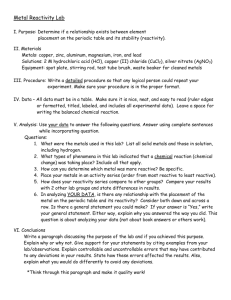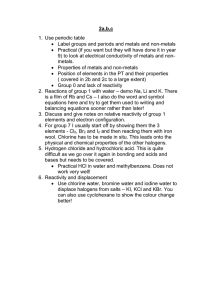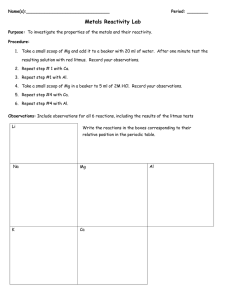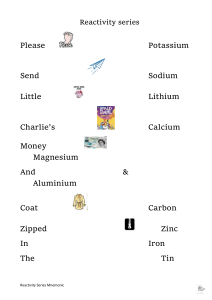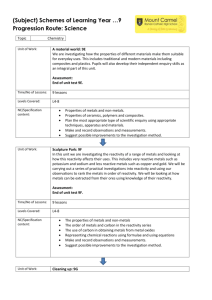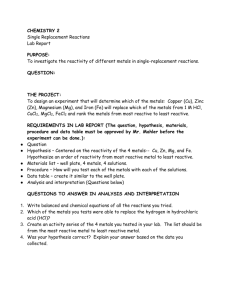LAB – COMPARING THE REACTIVITY OF METALS
advertisement
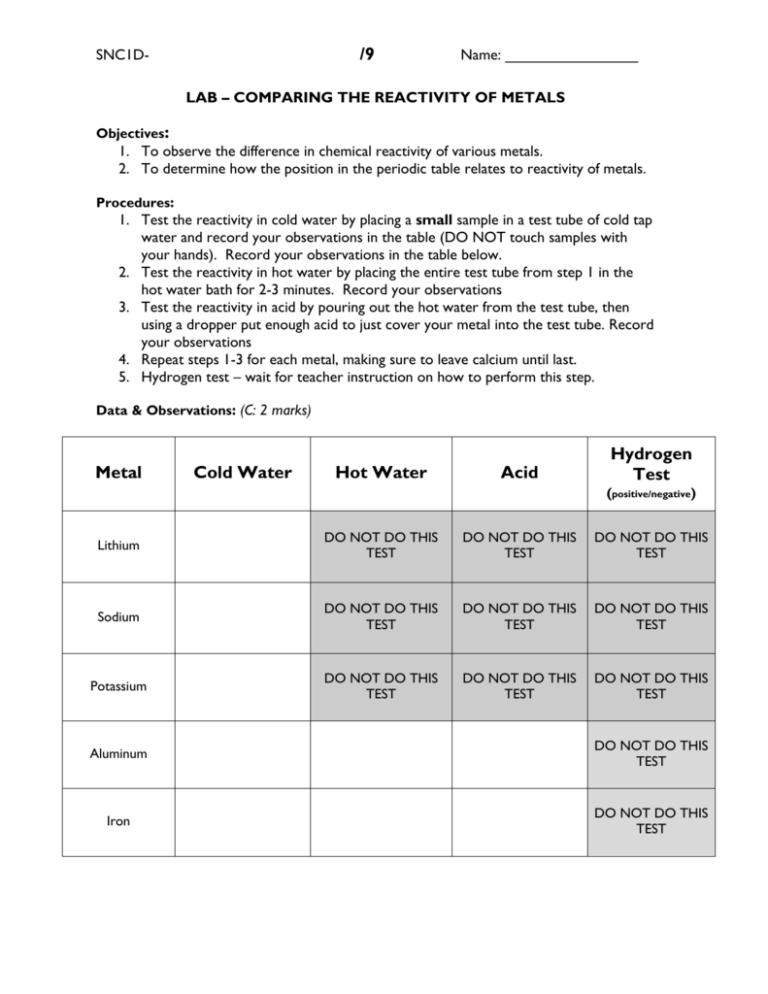
/9 SNC1D- Name: ________________ LAB – COMPARING THE REACTIVITY OF METALS Objectives: 1. To observe the difference in chemical reactivity of various metals. 2. To determine how the position in the periodic table relates to reactivity of metals. Procedures: 1. Test the reactivity in cold water by placing a small sample in a test tube of cold tap water and record your observations in the table (DO NOT touch samples with your hands). Record your observations in the table below. 2. Test the reactivity in hot water by placing the entire test tube from step 1 in the hot water bath for 2-3 minutes. Record your observations 3. Test the reactivity in acid by pouring out the hot water from the test tube, then using a dropper put enough acid to just cover your metal into the test tube. Record your observations 4. Repeat steps 1-3 for each metal, making sure to leave calcium until last. 5. Hydrogen test – wait for teacher instruction on how to perform this step. Data & Observations: (C: 2 marks) Metal Cold Water Hot Water Acid Hydrogen Test (positive/negative) Lithium DO NOT DO THIS TEST DO NOT DO THIS TEST DO NOT DO THIS TEST Sodium DO NOT DO THIS TEST DO NOT DO THIS TEST DO NOT DO THIS TEST Potassium DO NOT DO THIS TEST DO NOT DO THIS TEST DO NOT DO THIS TEST Aluminum DO NOT DO THIS TEST Iron DO NOT DO THIS TEST /9 SNC1D- Name: ________________ Magnesium DO NOT DO THIS TEST Zinc DO NOT DO THIS TEST Calcium (do this one last) DO NOT DO THIS TEST Questions: 1. In which group does lithium (Li), sodium (Na), and potassium (K) belong? (K: 1 mark) 2. What is it about the electron arrangement that makes these metals so reactive? (I: 1 mark) 3. According to your data how does chemical reactivity change as you go from top to bottom of any group? (I: 1 mark) 4. According to your data how does chemical reactivity change as you go from left to right of any period? (I: 1 mark) 5. Based on their position on the periodic table, would you expect the following elements to be more or less reactive than Calcium? (A: 2 marks) a. Beryllium b. Strontium c. Potassium d. Chromium SNC1D- /9 Name: ________________ 6. Copper is often used for water pipes, but in roman times lead was used for plumbing. What property makes both of these metals suitable for this use? What do we know now that makes lead unsuitable for this purpose today? (A: 1 mark)
